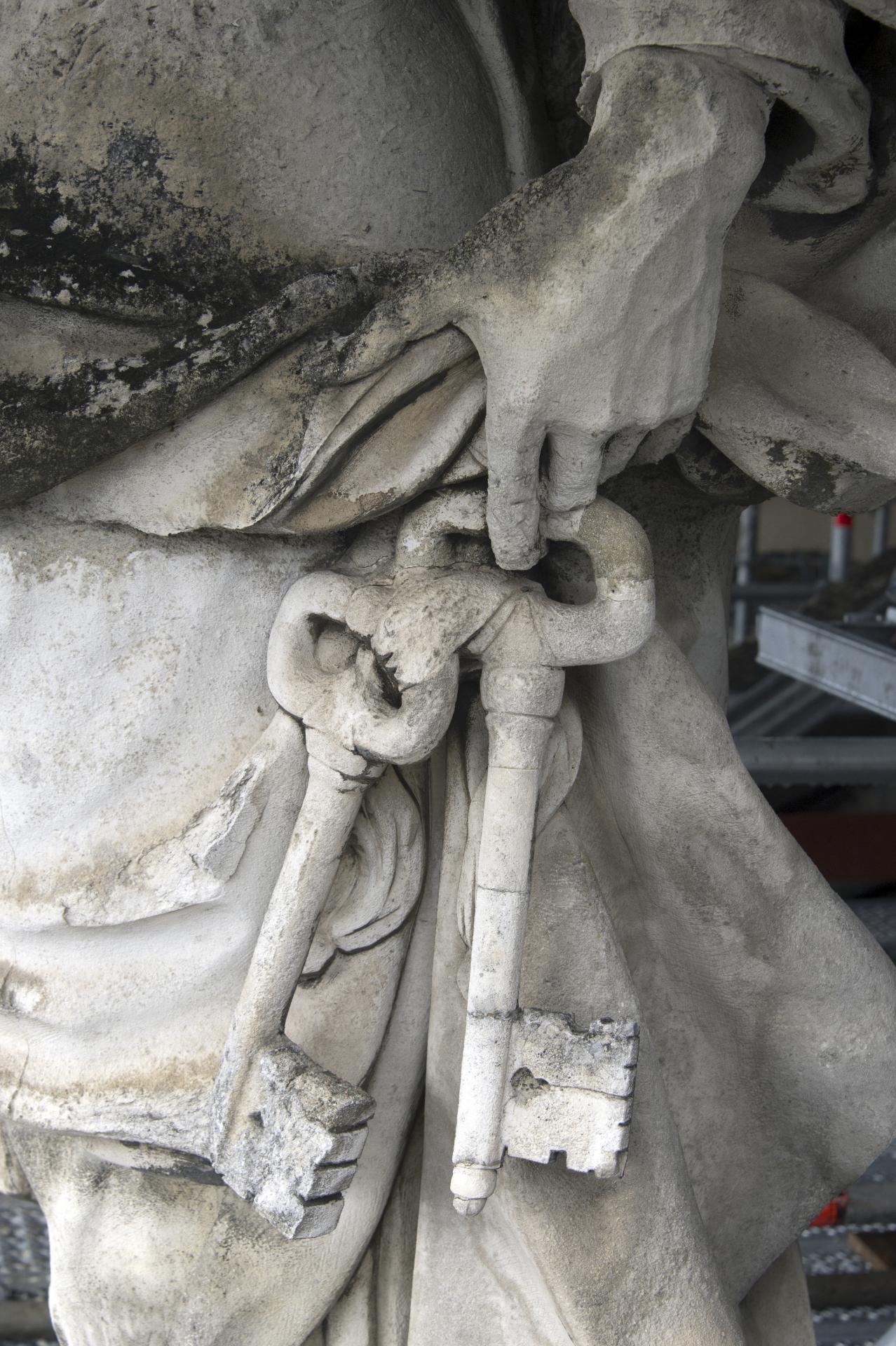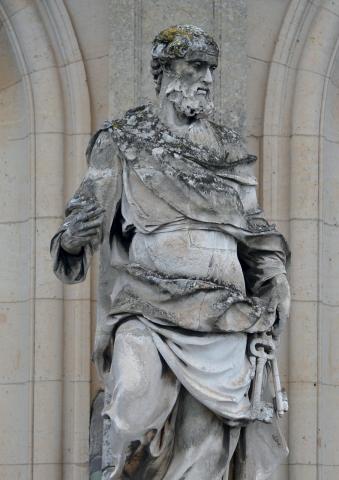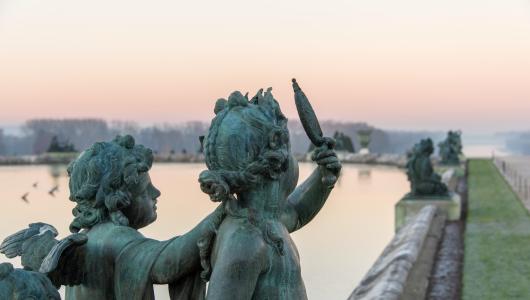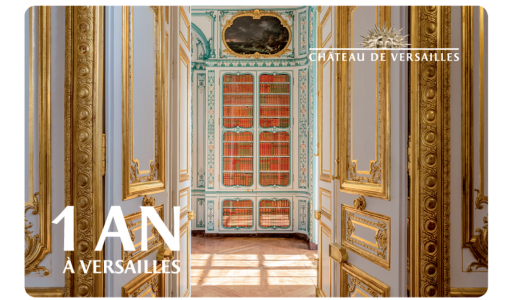Saint Peter
Represented as though walking and looking to the East, Saint Peter is wearing a tunic with a cloak fastened by a circular fibula on his right shoulder. His face, framed by a short beard and curly hair, is marked by signs of age. In his left hand he is holding the keys to the Kingdom of Heaven, conferred on him by Christ.
Peter and his brother Andrew were fishermen on the Sea of Galilee and were the first two disciples to follow Jesus. After Pentecost, Peter became the leader of the apostles and travelled through Palestine and Asia Minor where he worked multiple miracles and converted many followers. Around 44 AD he left for Rome where he set up a community of which he became the first bishop. He was crucified in 64 or 67 AD during a period of major persecution by Emperor Nero.
Originally named Simon, the Gospel of Mark tells us that Peter received his new name from Jesus as a sign of his role in the construction of the future Church: “You are Peter, and on this rock I will build my church” (Mt 16:17-19). Ever since early Christianity Peter has been represented with a set of keys, traditionally composed of two which are the key of Heaven and the key of Earth.
Saint Peter's keys © EPV/Didier Saulnier
Claude Poirier
Received at the Royal Academy in 1703, Claude Poirier became an assistant professor in 1715. For the interior of the Royal Chapel of Versailles he sculpted two bas-reliefs: A group of angels holding symbols of the Passion and the presentation at the Temple. The sculptor was also the author of the decoration in the Oeil-de-Boeuf Room in the Palace of Versailles, as well as some of the sculptures of the fountain at the Petit Trianon. For the estate of Marly, he created a nymph called Arethusa in 1706 with Jean Hardy, which was matched by the Amphitrite crafted by Jacques Prou in 1716 and later given to Madame de Pompadour in 1754 for the waterfall at the Château de Bellevue.






